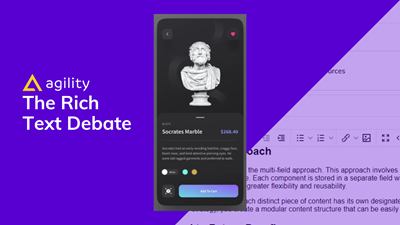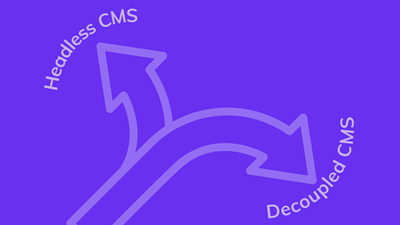Should You Avoid Rich Text in Your Headless CMS?


In content management, the debate over whether to embrace or shun rich text capabilities in your Headless CMS (Content Management System) has been a topic of discussion for quite some time. Rich text, with its ability to provide visually appealing and formatted content, has its merits. However, there's a growing trend toward adopting a multi-field approach instead. Let's explore the reasons behind this movement and whether avoiding rich text might be the right choice for your content strategy.
The Pitfalls of Rich Text
"We don't want to lock ourselves into that sort of place where we can't reuse our content very well,"
This sentiment echoes a common concern in the world of content creation. When you rely heavily on rich text, you risk tethering your content to a specific design or layout. This can create difficulties, especially when you must repurpose your content across various platforms, screens, and devices.
A key issue arises when we examine the nature of the rich text itself. Rich text is often a monolithic entity, encompassing a mix of headings, paragraphs, call-to-actions, images, and various formatting elements. This bundling of diverse content elements makes reusing individual components across different contexts challenging. Instead, you end up with a content snippet intrinsically tied to a particular visual presentation.
The Multi-Field Approach
So, what's the alternative? Enter the multi-field approach. This approach involves breaking down your content into its individual components: headings, descriptions, call-to-actions, images, and more. Each component is stored in a separate field within your CMS. This approach is about decoupling your content's structure from its presentation, paving the way for greater flexibility and reusability.
Imagine a content form where each distinct piece of content has its own designated field. This might include title, category, description, price, and more fields. By employing this strategy, you create a modular content structure that can be easily rearranged without affecting the content itself.
The Road to Future-Proofing
The primary advantage of the multi-field approach lies in its future-proofing capabilities. As the digital landscape evolves, so too will your content's requirements. Perhaps your app undergoes a redesign or needs to cater to different screen sizes. With a multi-field structure, you can adapt your content's presentation without overhauling the content itself. This approach ensures that your content remains adaptable and responsive to changing design paradigms.
Empowering with Data Types
Data types play a crucial role in this approach. By defining specific data types for each field, you create self-describing content. For instance, a price could be stored as an integer representing cents, allowing for easy currency conversion. An image's description could include attributes that define its size, format, and position within the layout. These data types make content validation more robust, ensuring that your content is coherent and aligned with your design principles.
Ensuring Content Consistency
Moreover, adopting the multi-field approach can help enforce content consistency. Making certain fields mandatory prevents content creators from omitting crucial information. For example, a product description might always require a category and price to be present. This consistency safeguards your brand identity and reinforces your content's integrity.
When Does Rich Text Make Sense?
However, let's not dismiss rich text entirely. There are instances where embracing rich text can be advantageous. For example, when rapid content creation is necessary for experimentation or temporary purposes, rich text can be a suitable tool. Furthermore, interactive capabilities like links or embedded media can be efficiently integrated within rich text components. The key is to carefully balance rich text with the broader content strategy.
Embracing Future-Proofing
In conclusion, the choice between rich text and a multi-field approach in your Headless CMS hinges on your content strategy and long-term goals. While rich text offers a quick and visually appealing way to create content, it can lead to rigidity and design entanglements. On the other hand, the multi-field approach prioritizes flexibility, reusability, and future-proofing. As digital platforms continue to evolve, the ability to seamlessly adapt your content's presentation while preserving its essence becomes an invaluable asset. So, when considering your Headless CMS strategy, remember that content longevity and adaptability are the cornerstones of a successful digital presence.

About the Author
Harmonie is the Senior Marketing Manager at Agility CMS



